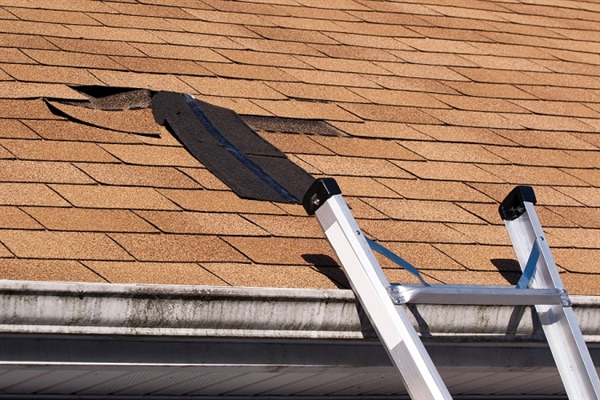After the Storm: Identifying Damage to Your Home or Property

Storms can cause massive amounts of damage, and anyone who lives in Minnesota knows how extreme they can get. Making sure you find a safe place to take shelter is your first priority. Even after the storm passes, your troubles are only just beginning, as you’ll soon have to deal with the aftermath.
Aside from getting damages assessed, there are a few other tips to follow, and the Restoration Network team has listed them in our helpful guide on what to do if you believe your property has storm damage.
Roof Damage
Roof damage is a common experience with most storms. It occurs due to high winds and falling debris, and the shingles on your roof are vulnerable to damage during a storm, primarily due to falling debris. Moreover, excessive rain causes water to pool on the roof, increasing the leaks in your roof from cracks and holes that need to be repaired right away.
If it's safe, assess your roof for storm damage by examining for cracked or loose shingles. Any area where water can get in is almost guaranteed to leave an open invitation for a worst-case scenario. If left unrepaired, your exterior siding or paint can eventually show signs of damage, and even worse, your electrical systems are at risk, so don't wait to do an inspection.
Damaged Siding & Exteriors
If a storm just passed, chances are that it caused significant damage to the exterior of your house. A strong enough storm can cause the siding to loosen and the paint to come off. In addition, a storm can cause trees to fall and damage the fence and railing of your property, creating a massive headache!
Always go over the damage and make sure you get an expert inspection for any exterior areas like paint, siding, or brick.
Broken Windows
Winds or flying debris can potentially damage your windows. These strong winds can break the frames or panes of your window or cause small cracks.
To assess the damage, you always have to examine the windows carefully. You should look for shattered glass, damaged frames, or any other damage in your window.
Clogged or Damaged Gutters
Even with the best maintenance and care, it's important to keep your gutters protected in big storms. After the storm passes, checking if the gutters are clogged is not what comes to mind, but clogged drains are pretty common after one.
Debris and twigs come down with the rain, and they get jammed up in the gutters and clog them, so look for fragments blocking the entry to the downspout and gutters.
Flooding Inside the Home
From your basement to your attic, your property contains important storage material you want to keep safe. Floods can occur due to water seepage through walls with a weak foundation or oversaturation of the soil surrounding your property, destroying your belongings and leaving you frustrated and wondering what to do next.
The whole scenario is extremely dangerous. In addition to contaminants, the water can have electrically charged items or pointed objects floating in it, making it even more hazardous.
Damage can look like:
-
Brown, orange, or yellow discoloring on your walls
-
Foul odors in your home
-
Drywall that's cracking or crumbling
-
The foundation is starting to develop cracks
-
Your flooring is warping, cracking, and buckling
Whether you are dealing with melting snow or your plumbing system is acting up, flooded areas are the perfect space for mold to grow fast! You should immediately check the entire property after the storm, assess the damage, and shift your undamaged belongings elsewhere.
Working with a restoration company will allow you to remove any excess moisture and dry out the area to help mitigate mold growth, restoring your property faster.
Sewage Backup
One of the worst things that can happen after a storm is flooding sewage. Naturally, you might want to jump right in and get this situation resolved as fast as possible, but there are multiple reasons why this is not a DIY situation. Aside from the health risks of exposure to these contaminants, there's also a concern about mold developing and your property deteriorating.
You need professionals with experience in sewage restoration because they have the right know-how and tools to restore the property and salvage items like furniture, saving you time and money.
Don't Put Off Fixing Storm Damage
Once your property is clear of the storm, start assessing the damages. If the destruction is extreme enough, it can affect everything from your energy bills to the safety of your home or employees. On top of this, there will be a higher demand for materials, which could make the repair price more expensive if you wait too long.
Leaks will happen, and mold growth can become a major issue when left unchecked, so if you're planning on filing an insurance claim, don't wait until it's too late and they deny it due to negligence. Always take thorough documentation and contact a restoration specialist to get the process started as soon as possible.
Contact Us to Restore Your House Today!
If your house needs restoration after a storm, we're here to help. At Restoration Network, we specialize in storm damage repair.
Whether it's rooftops, sidings, or gutters, our team of certified experts can handle it. Contact us today at 612-564-0202 to avail of our storm restoration services.